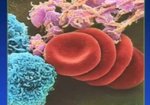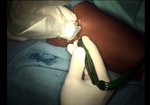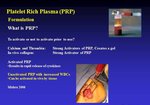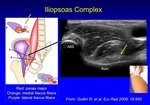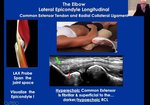Playback speed
10 seconds
Ultrasound Guided PRP Injection Checklist
By
Learn MSK Sono
FEATURING
Jamie Bie, RMSKS, RVT, RDMS
By
Learn MSK Sono
FEATURING
Jamie Bie, RMSKS, RVT, RDMS
218 views
July 4, 2023
Would you like to know what is needed to perform ultrasound guided PRP injections in ...
read more ↘ your lab?
Here is your checklist:
✅ The appropriate diagnosis to perform a PRP injection.
✅ Injection supplies such as sterile gloves, lidocaine, an 18 G 1 1/2 inch needle to draw up lidocaine, a 25 G 1 1/2 inch needle to administer lidocaine, a 10 cc syringe, a sterile probe cover, sterile gel, a sterile machine cover, sterile gauze, chloraprep, a fenestrated drape, and a bandage.
✅ 30 and 60 ml disposable procedure packs available that include your venipuncture supplies, an anticoagulant, a container called a process disposable, that has a white and red port, and the appropriate syringes and needles needed for the blood draw and the PRP preparation (one must include a spacer).
✅ A Centrifuge onsite to spin the patients blood, separating the platelet rich plasma from the whole blood.
✅ Reusable 30 and 60 balance weights for the centrifuge.
✅ Make sure that the out of pocket cost of the procedure is available to your patient (Insurance does not typically cover PRP injections).
✅ A signed consent form from your patient after fully explaining the procedure along with the cost, risks, and benefits associated with it
✅ Ensure that the patient has been informed that they are not allowed to take anti-inflammatory medications (NSAID’s) for 7 days prior to procedure and 14 days after the procedure.
✅ A trained physician to administer the PRP injection and perform tendon fenestration if needed.
✅ An assistant, such as a sonographer, to help setup and guide the procedure.
✅ A nurse or phlebotomist available to draw the patient’s blood on the day of the procedure.
✅ Post procedure instructions for the patient after the procedure is complete.
Once you have checked all these boxes, You’re ready for PRP application
↖ read less
read more ↘ your lab?
Here is your checklist:
✅ The appropriate diagnosis to perform a PRP injection.
✅ Injection supplies such as sterile gloves, lidocaine, an 18 G 1 1/2 inch needle to draw up lidocaine, a 25 G 1 1/2 inch needle to administer lidocaine, a 10 cc syringe, a sterile probe cover, sterile gel, a sterile machine cover, sterile gauze, chloraprep, a fenestrated drape, and a bandage.
✅ 30 and 60 ml disposable procedure packs available that include your venipuncture supplies, an anticoagulant, a container called a process disposable, that has a white and red port, and the appropriate syringes and needles needed for the blood draw and the PRP preparation (one must include a spacer).
✅ A Centrifuge onsite to spin the patients blood, separating the platelet rich plasma from the whole blood.
✅ Reusable 30 and 60 balance weights for the centrifuge.
✅ Make sure that the out of pocket cost of the procedure is available to your patient (Insurance does not typically cover PRP injections).
✅ A signed consent form from your patient after fully explaining the procedure along with the cost, risks, and benefits associated with it
✅ Ensure that the patient has been informed that they are not allowed to take anti-inflammatory medications (NSAID’s) for 7 days prior to procedure and 14 days after the procedure.
✅ A trained physician to administer the PRP injection and perform tendon fenestration if needed.
✅ An assistant, such as a sonographer, to help setup and guide the procedure.
✅ A nurse or phlebotomist available to draw the patient’s blood on the day of the procedure.
✅ Post procedure instructions for the patient after the procedure is complete.
Once you have checked all these boxes, You’re ready for PRP application
↖ read less
Comments 0
Login to view comments.
Click here to Login


